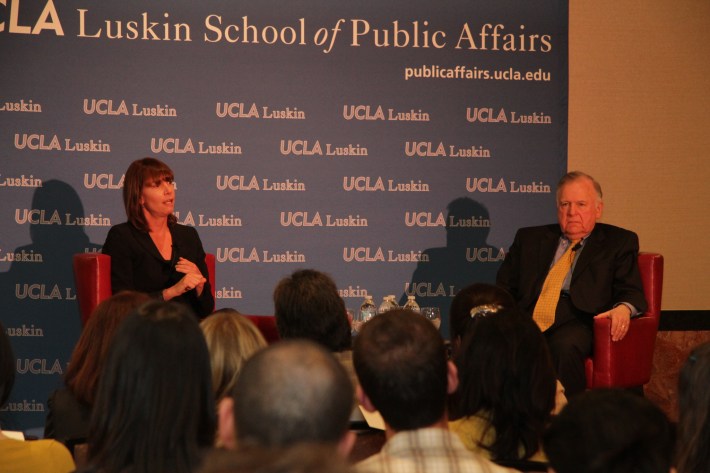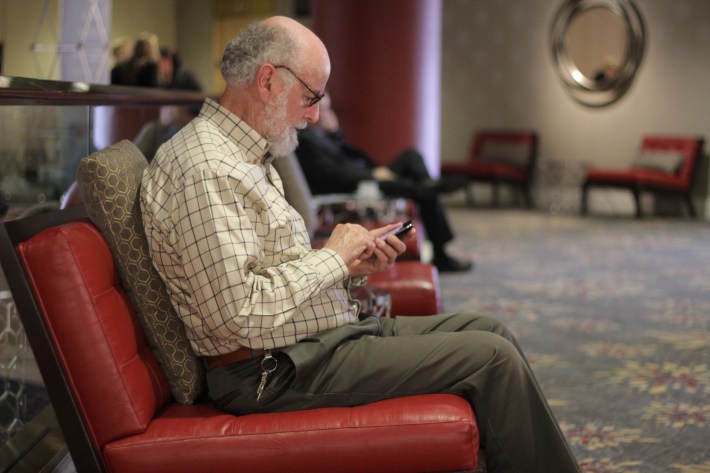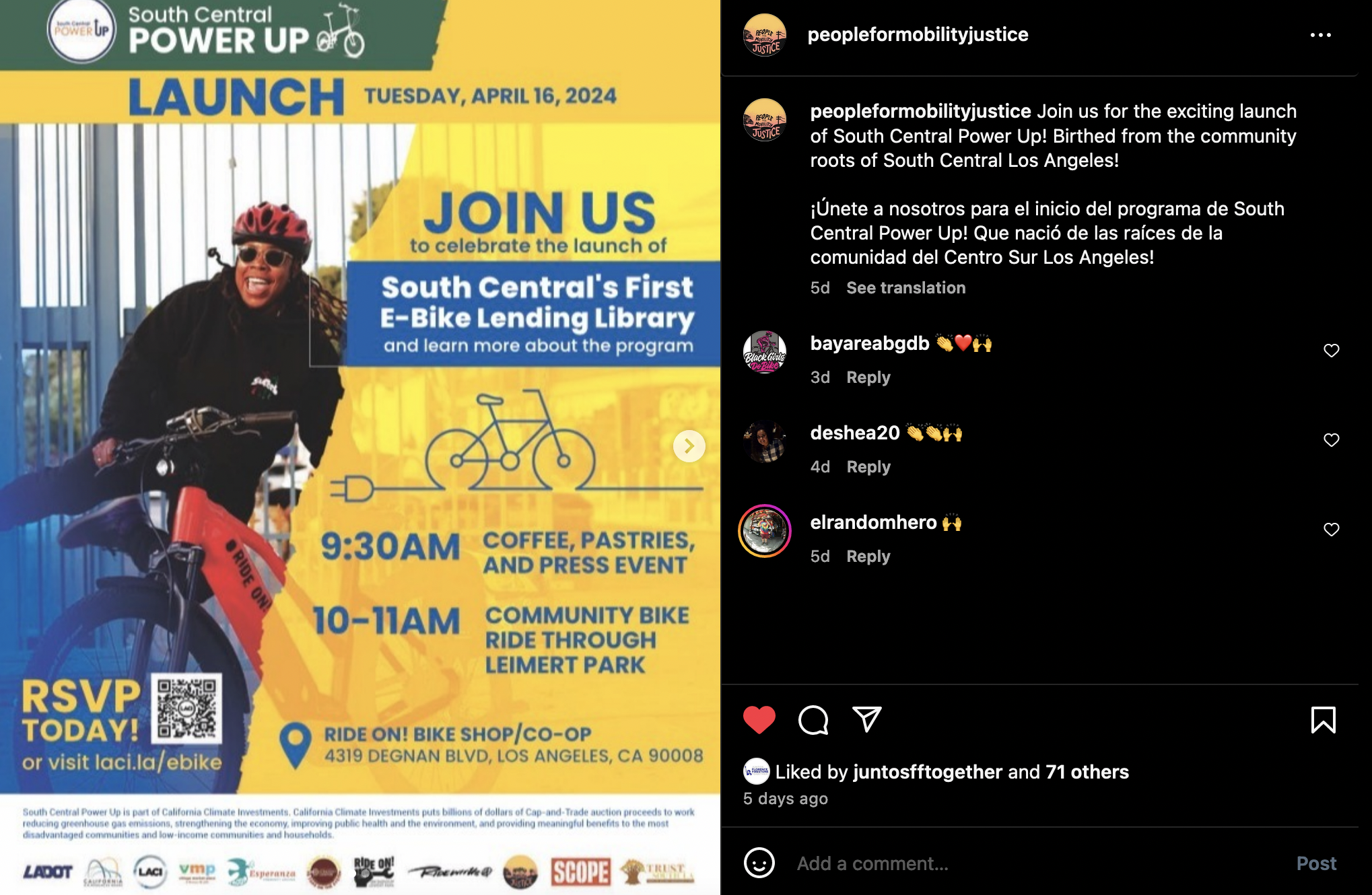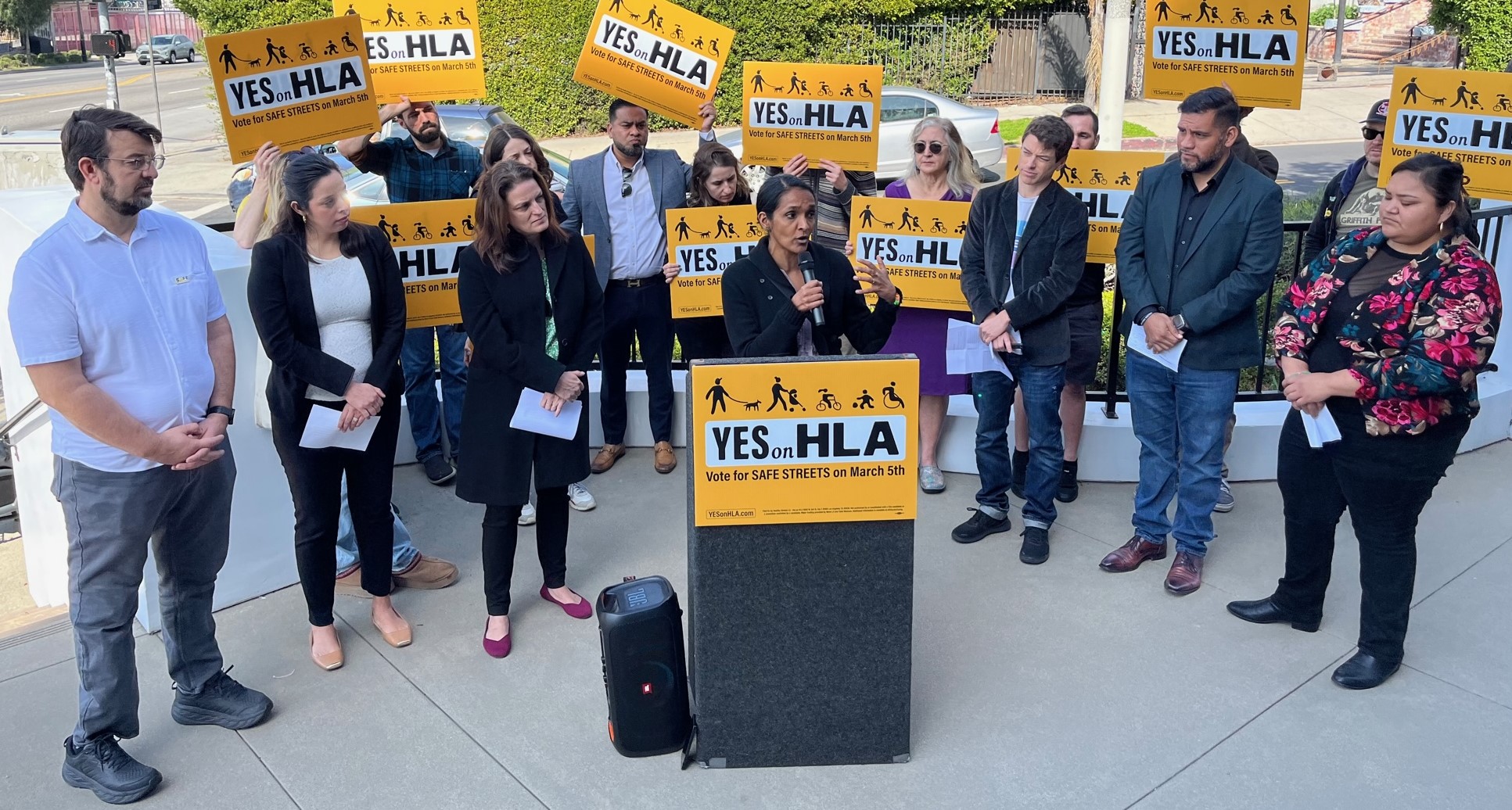Complete Streets Today: The Challenges of Swimming in the Mainstream
11:40 AM PDT on April 28, 2015
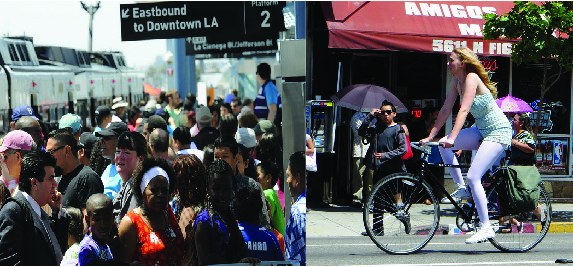
Join us in writing the next chapters of complete streets history by registering now for the 2015 UCLA Complete Streets conference on Thursday, May 14.
Join me on a brief journey back in time to the first time the UCLA School of Public Affairs hosted a conference about Complete Streets. The year was 2011 and mobility and streets in the region looked quite a bit different. The Los Angeles Bicycle Master Plan was recently adopted, and very little of it had been implemented. There was no Expo Line; Metro had neither a complete streets policy nor a first-last mile plan. There were no parklets or plazas. There were no pedestrian staff at the Los Angeles Department of Transportation.
And in these regards, Los Angeles was not unique: San Francisco was still locked in their bike plan lawsuit, the Washington D.C bike share system had just been installed, Citibike was a glimmer in Janette Sadik-Khan’s eye, and Chicago didn’t have a single mile of protected bikeway. Suffice it to say, while many of us in the transportation field wished for this future; it was hard to see it coming just four years ago.
In 2011, complete streets appeared to be more of a movement among bicycle and pedestrian advocates, working inside and outside government to try and find some space for people to use “alternative” modes. We were even still using the word “alternative,” as if riding a bicycle to a friends house were equivalent to listening to the Sex Pistols in the 1970s.
So where are we now? Why does UCLA continue to host a conference on this topic and what is different this year compared to 2011, 2012 and 2013? In short: this is a rapidly evolving field and just in our 2 year absence, a lot has changed. For example, a big change on many minds is the elimination of Level of Service (LOS) as a threshold for traffic impacts; we’ll have a speaker from the California Office of Planning and Research along with an example from Pasadena, a city that has already adopted their new non-LOS measure. This is a conference theme: the increasing extent to which biking and walking are being integrated into mobility planning, rather than being siloed in one-off plans conducted by boutique shops.
What are the changes, opportunities, and challenges that come along with this new-found integration into larger conversations about transportation and mobility? Notably, a change in language; thankfully, we now discuss how to provide transportation “options” rather than “alternative” modes.
The day's agenda will challenge attendees to think about including complete streets as part and parcel of mobility planning. We’ll provide the forum, space and speakers for thinking about this and some examples. Our three broad panel topics are process, equity and the media. The breakout sessions allow for people to get a deep dive into issues of the future; moving away from LOS, thinking about goods movement considerations and pedestrian issues for our aging society. Overall, the day celebrates the transition of complete streets from the margins to the mainstream, and asks us to consider the challenges of operating at this higher level.
If that teaser doesn’t spark your interest, then perhaps our stellar speakers and their presentation topics will. Please join us.
- Charles Brown, Rutgers University
- Chris Ganson, California Governor’s Office of Planning and Research
- Jessica Meaney, Investing in Place
- Jamie Parks, City of Oakland
- Seleta Reynolds, City of Los Angeles Department of Transportation
- Beth Rolandson, City of Santa Monica
- Ryan Russo, New York City Department of Transportation
- Stephanie Seskin, National Complete Streets Coalition
- Francie Stefan, City of Santa Monica
- Asha Weinstein Agarwal, San Jose State University
- Craig Williams, Alta Planning + Design
- Rick Willson, Cal Poly Pomona
- Mark Yamarone, City of Pasadena
- Allison Yoh, Port of Long Beach
Register for the day and guarantee your seat at the keynote address with the U.S. Secretary of Transportation Anthony Foxx at the Historic Union Station Ticket Hall.
Stay in touch
Sign up for our free newsletter
More from Streetsblog Los Angeles
Metro Looks to Approve Torrance C Line Extension Alignment
Selecting the relatively low-cost hybrid alternative should help the oft-delayed South Bay C Line extension move a step closer to reality
This Week In Livable Streets
CicLAvia returns to Venice Boulevard, Metro board committees, L.A. City Council Transportation Committee, Metro budget theater, and more
